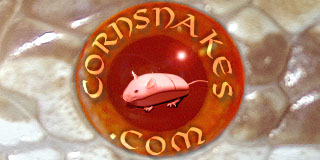Nanci
Alien Lover
From the Social Snakes blog:
(Link to Video)
Yesterday morning Lula (our dog) and I headed back from tracking our rattlesnakes on a trail through the mesquite forest. Lula was only a step or two ahead, so I couldn't see the trail right in front of me. Mid-step, I saw a western diamond-backed rattlesnake (Crotalus atrox) stretched out across the trail where my foot was coming down. I immediately jumped back but Lula hadn't missed a step as she walked right over the snake. The snake reacted to my jump by assuming the defensive posture seen above and rattling.
Many believe that rattlesnakes spend their days waiting for a chance to 'attack' us, our children, and our pets. This rattlesnake had the perfect opportunity to attack us, but never attempted to bite. After a minute or two of rattling, it went back about its business:
Why? From a snake's perspective, we are the predator, the threat, and they are scared of us. A snake's first line of defense is to hope you don't see it (crypsis or camouflage), then attempt to escape (cowards) and/or display (for example rattling, bluffers). If given no other choice, they strike (warriors). And this is supported by numerous studies (for example: Gibbons & Dorcas 2002, Amarello et al. 2008), not just the anecdote presented here. Additionally,
“50 to 70% of reptile bites managed by the Arizona Poison and Drug Information Center were provoked by the person who was bitten--that is, someone was trying to kill, capture or harass the animal.” (Arizona Poison & Drug Information Center)
So perhaps we have something to learn from the snake: it is in everyone’s interest to leave each other alone.
Further reading:
Amarello, M., K. Bonine, and D. Lazcano. 2008. Factors influencing the antipredator behavior of Mexican lance-headed rattlesnakes (Crotalus polystictus) toward humans. Pp. 229-234 in W.K. Hayes, K.R.Beaman, M.D. Cardwell, and S.P. Bush (eds.), The Biology of Rattlesnakes. Loma Linda University Press, Loma Linda, CA.
Arizona Poison & Drug Information Center. Rattlesnakes (information on venomous snake bites in the USA).
Gibbons, J.W. and M.E. Dorcas. 2002. Defensive behavior of cottonmouths toward humans. Copeia 2002: 195-198.
(Link to Video)
Yesterday morning Lula (our dog) and I headed back from tracking our rattlesnakes on a trail through the mesquite forest. Lula was only a step or two ahead, so I couldn't see the trail right in front of me. Mid-step, I saw a western diamond-backed rattlesnake (Crotalus atrox) stretched out across the trail where my foot was coming down. I immediately jumped back but Lula hadn't missed a step as she walked right over the snake. The snake reacted to my jump by assuming the defensive posture seen above and rattling.
Many believe that rattlesnakes spend their days waiting for a chance to 'attack' us, our children, and our pets. This rattlesnake had the perfect opportunity to attack us, but never attempted to bite. After a minute or two of rattling, it went back about its business:
Why? From a snake's perspective, we are the predator, the threat, and they are scared of us. A snake's first line of defense is to hope you don't see it (crypsis or camouflage), then attempt to escape (cowards) and/or display (for example rattling, bluffers). If given no other choice, they strike (warriors). And this is supported by numerous studies (for example: Gibbons & Dorcas 2002, Amarello et al. 2008), not just the anecdote presented here. Additionally,
“50 to 70% of reptile bites managed by the Arizona Poison and Drug Information Center were provoked by the person who was bitten--that is, someone was trying to kill, capture or harass the animal.” (Arizona Poison & Drug Information Center)
So perhaps we have something to learn from the snake: it is in everyone’s interest to leave each other alone.
Further reading:
Amarello, M., K. Bonine, and D. Lazcano. 2008. Factors influencing the antipredator behavior of Mexican lance-headed rattlesnakes (Crotalus polystictus) toward humans. Pp. 229-234 in W.K. Hayes, K.R.Beaman, M.D. Cardwell, and S.P. Bush (eds.), The Biology of Rattlesnakes. Loma Linda University Press, Loma Linda, CA.
Arizona Poison & Drug Information Center. Rattlesnakes (information on venomous snake bites in the USA).
Gibbons, J.W. and M.E. Dorcas. 2002. Defensive behavior of cottonmouths toward humans. Copeia 2002: 195-198.
